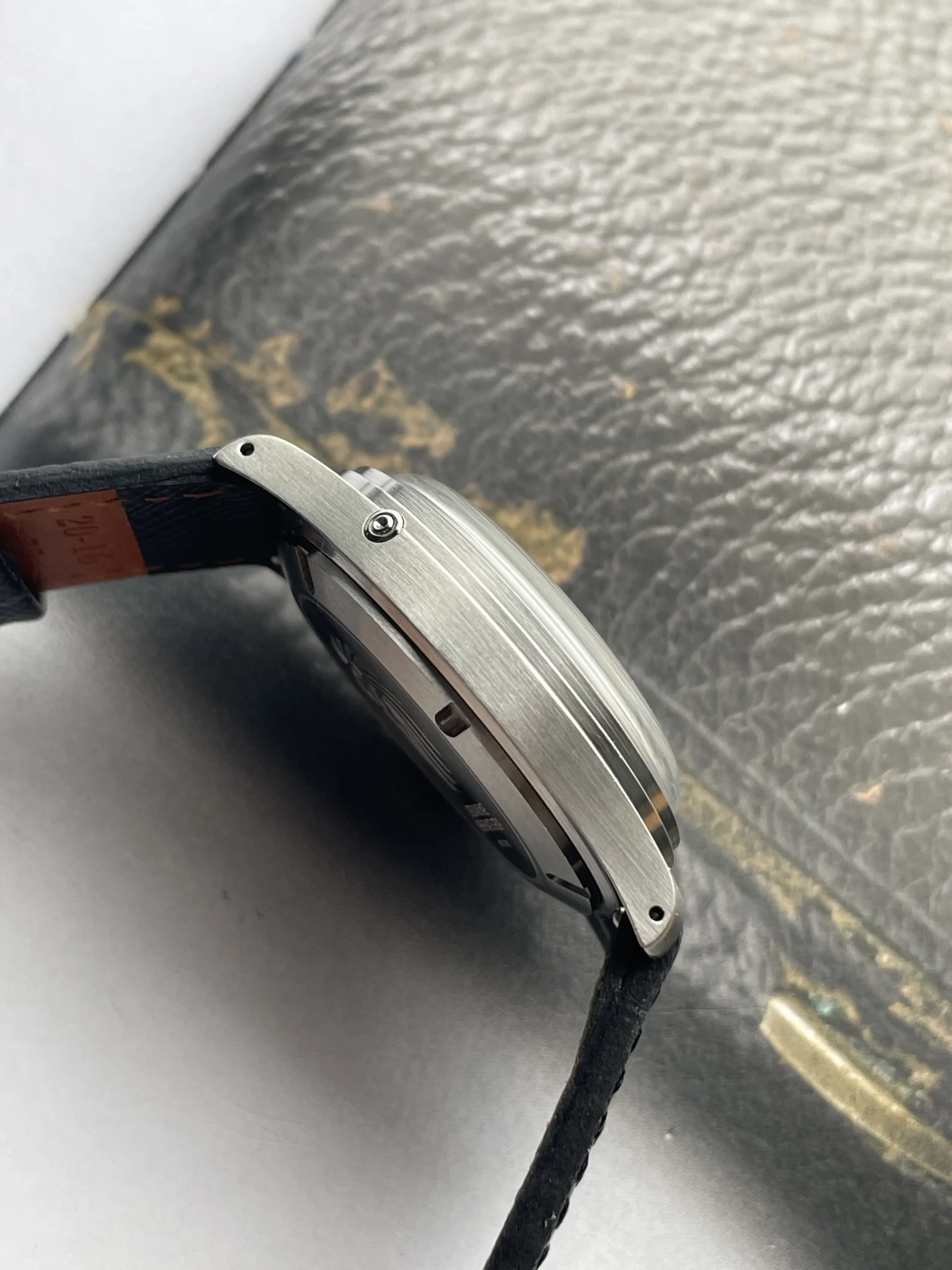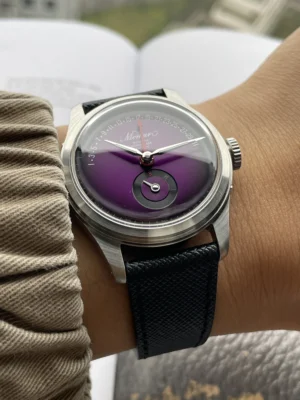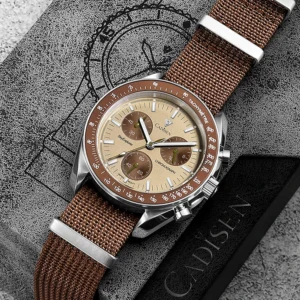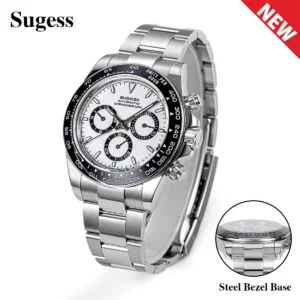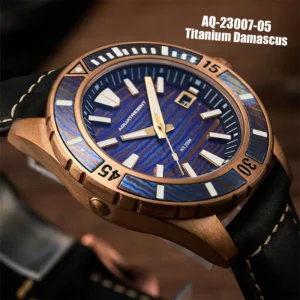Understanding Moonphase Watches: Form Meets Function
Moonphase watches represent the perfect marriage of artistic expression and astronomical function in the world of horology. These specialized timepieces do far more than tell time—they track and display the current phase of the moon as it journeys through its cycle, offering wearers a connection to the cosmos that predates modern timekeeping itself.
At their core, moonphase watches serve two distinct but complementary purposes:
- They provide practical astronomical information, displaying the current lunar phase (new moon, waxing crescent, first quarter, etc.)
- They offer exceptional aesthetic appeal through their often elaborately decorated moon discs and celestial imagery
- They connect wearers to natural rhythms that have guided humanity for millennia
The lunar cycle has profoundly influenced human civilization throughout history. From determining optimal planting and harvesting times in agriculture to predicting tidal patterns crucial for fishing and navigation, the moon’s phases have shaped how people interact with their environment. Religious and cultural celebrations worldwide still follow lunar calendars, with festivals and observances tied directly to specific moon phases.
Specialized timepieces that track lunar phases represent a fascinating intersection of practical functionality and artistic expression. In an age of digital technology, these mechanical marvels maintain our connection to ancient wisdom and celestial mechanics while showcasing the remarkable precision achievable through traditional watchmaking techniques.
The Evolution of Lunar Timekeeping: From Ancient Devices to Modern Wristwear
The human fascination with tracking lunar movements spans thousands of years, evolving from monumental stone observatories to intricate mechanical wonders that fit comfortably on the wrist.
The journey of lunar timekeeping reveals humanity’s persistent desire to understand and map celestial movements:
Ancient Beginnings (150-100 BC): The Antikythera mechanism, discovered in a shipwreck off the Greek coast, represents one of the earliest known astronomical calculating devices. This complex assembly of bronze gears could track lunar phases with remarkable accuracy for its time.
Astronomical Clocks (14th-16th centuries): Medieval Europe saw the development of large astronomical clocks in town squares and cathedrals. These impressive machines displayed celestial information, including moon phases, for public reference.
Pocket Watch Era (17th-19th centuries): As mechanical timekeeping miniaturized, pocket watches began incorporating moonphase displays for wealthy patrons who valued both practical astronomy and mechanical artistry.
Wristwatch Revolution (1925 onwards): Patek Philippe created the first wristwatch with a perpetual calendar and moonphase complication, transforming what was once a room-sized mechanism into a portable wonder.
This technological evolution parallels other specialized timepieces throughout history. The evolution of dive watch technology followed a similar path of innovation and miniaturization, with both categories demonstrating how watchmaking consistently pushes the boundaries of mechanical engineering. The timeline of diving watch innovations shows comparable advancements in specialized functionality, with both moonphase and diving watches evolving from practical tools to coveted luxury items that maintain their original functionality while adding artistic and collectible appeal.
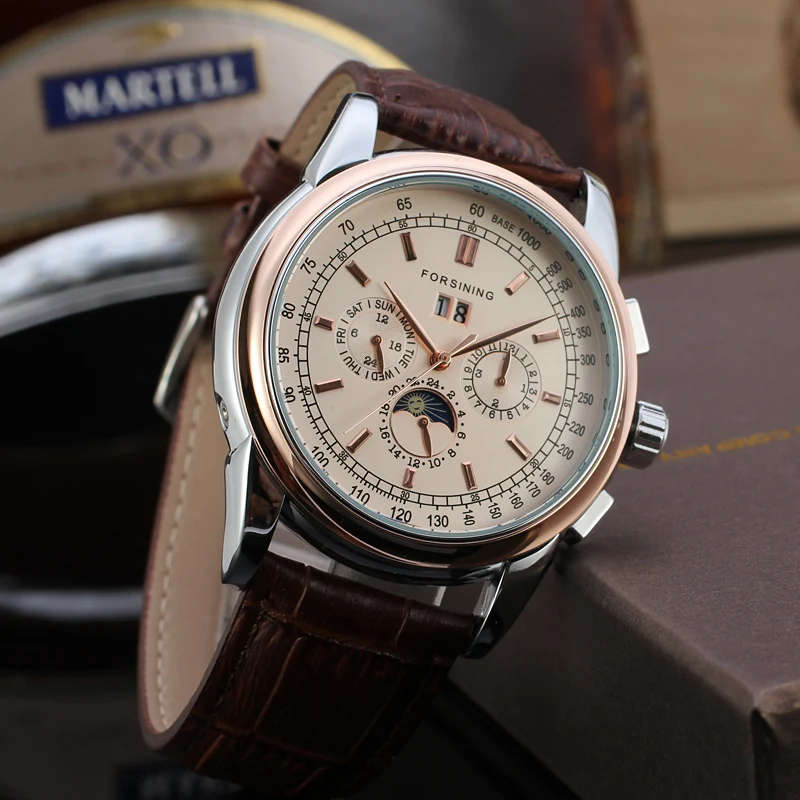
Decoding the Mechanics: How Moonphase Complications Work
The moonphase complication represents one of watchmaking’s most visually captivating yet mechanically clever achievements. Understanding how these mechanisms function reveals the ingenious solutions watchmakers have devised to track celestial movements using purely mechanical means.
At its most fundamental level, a standard moonphase mechanism operates through a precisely engineered system:
- A rotating disc featuring two identical moon faces completes one full rotation every 29.5 days (approximating the lunar cycle)
- This disc is advanced by a precisely calculated gear train connected to the watch’s timekeeping mechanism
- A specially shaped aperture in the watch dial creates the visual effect of the moon waxing and waning as the disc rotates beneath it
- The mechanical system typically advances the moonphase disc one tooth each day via a finger mechanism activated by the date change function
The gear ratio is critical to the mechanism’s accuracy. Most standard moonphase watches employ a 59-tooth gear wheel that advances one tooth per day, creating a 29.5-day cycle (since the wheel completes a full rotation after 59 teeth ÷ 2 moons = 29.5 days). This approximation is remarkably close to the actual lunar cycle but accumulates error over time due to the true lunar cycle being approximately 29.53 days.
More sophisticated designs include additional gears and complications. Advanced calendar mechanisms that often include moonphase displays integrate with day, date, month, and sometimes even leap year indications. These systems require exceptionally precise engineering to coordinate multiple rotating elements and calendar adjustments simultaneously.
The power to drive these intricate mechanisms ultimately comes from the mainspring, with self-winding movements that power moonphase complications offering the advantage of maintaining consistent operation without daily manual winding. The energy transfer through the gear train must be carefully calibrated to ensure the moonphase disc advances correctly without consuming too much power from the movement.
Display Variations: Artistic Interpretations of the Lunar Cycle
Moonphase watches offer watchmakers a unique canvas for artistic expression while maintaining astronomical functionality. The various display styles reflect different approaches to visualizing the lunar cycle, each with its own aesthetic and technical considerations.
The most common display formats include:
Bosom or “Smiling Moon” Display: The traditional and most recognizable design features a crescent-shaped aperture showing a portion of the rotating moon disc beneath. As the disc turns, the visible portion of the moon grows or shrinks, mimicking the moon’s actual appearance from Earth. This classic presentation often includes decorative elements like stars on a blue or black background representing the night sky.
Radial Indicator Displays: Rather than showing the actual moon image waxing and waning, some watches use a hand pointing to positions on a semi-circular scale, indicating the current phase from new moon to full moon and back. This approach prioritizes information clarity over visual representation.
Complete Lunar Cycle Displays: More elaborate designs show all lunar phases simultaneously on the dial, with an indicator pointing to the current phase. This educational approach provides a complete visualization of the lunar cycle at a glance.
3D Spherical Representations: Luxury watchmakers sometimes create three-dimensional moon representations that rotate within the watch case, offering a more realistic visualization of the lunar body. These can include intricate detailing of the moon’s surface features.
Artistically, moonphase watches provide opportunities for exceptional craftsmanship in the moon face itself. Traditional designs often feature anthropomorphic moon faces with human-like expressions, while contemporary approaches might opt for photorealistic lunar surface detailing or artistic interpretations using precious metals and gemstones.
The aesthetic integration with the watch dial creates another dimension for artistic expression, similar to how open heart automatic watches reveal mechanical beauty through careful aperture placement. Both styles strategically balance revealing internal mechanisms while maintaining overall dial harmony.
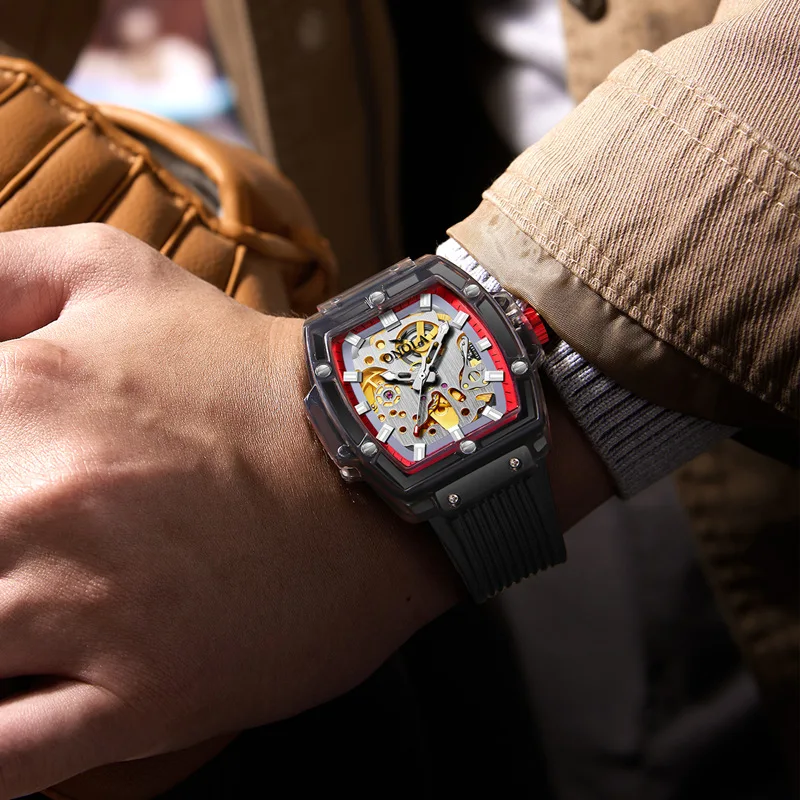
The Science of Lunar Accuracy: Understanding the True Synodic Month
Creating a truly accurate moonphase watch requires a deep understanding of lunar astronomy. The challenge for watchmakers lies in mechanically replicating a natural phenomenon that follows its own precise but slightly irregular schedule.
The synodic month—the time between successive new moons as observed from Earth—forms the foundation for moonphase accuracy calculations. While commonly rounded to 29.5 days, the actual measurement is considerably more precise:
- Exact synodic month: 29.53059 days
- In time units: 29 days, 12 hours, 44 minutes, 2.8 seconds
- Annual lunar cycles: Approximately 12.37 lunar months per solar year
This precision matters because mechanical watch mechanisms must translate this astronomical reality into gear movements. Any approximation of the lunar cycle introduces inaccuracy that compounds over time. The mathematical challenge involves creating gear ratios that closely approximate the true 29.53059-day cycle using a reasonable number of teeth that can be physically manufactured within a watch movement.
Several factors complicate this further. The moon’s orbit around Earth isn’t perfectly circular but elliptical, creating slight variations in its angular velocity. Additionally, the gravitational effects of the sun and other planets create minor perturbations in the moon’s orbit. While these variations are negligible for casual moonphase tracking, they represent the ultimate frontier for astronomical watch accuracy.
Understanding these astronomical realities helps contextualize the remarkable achievement of high-precision moonphase watches. The importance of precision in specialized timepieces extends beyond mere timekeeping to accurately tracking natural phenomena that operate independently of human time conventions.
Standard Moonphase Mechanisms: The 59-Tooth System
The conventional approach to moonphase complications revolves around the 59-tooth gear system—an ingenious but imperfect solution that balances manufacturing practicality with reasonable accuracy.
This standard mechanism functions through a surprisingly straightforward arrangement:
- A 59-tooth gear wheel sits beneath the dial, carrying two identical moon images
- Each day, a mechanical finger advances this wheel by one tooth
- Since the wheel contains two complete moon cycles (new moon to new moon), one full rotation of the wheel represents two lunar months
- Mathematical result: 59 teeth ÷ 2 cycles = 29.5 days per lunar cycle
This 29.5-day approximation, while close to the actual 29.53059-day synodic month, creates a measurable discrepancy:
- Error per lunar month: approximately 0.03059 days (about 44 minutes)
- Accumulated error: roughly 1 day every 2.7 years
- Practical implication: The standard moonphase display requires manual adjustment approximately every 2.5-3 years to maintain accuracy
This level of precision proved perfectly adequate for traditional timekeeping needs, and the 59-tooth system remains the most common implementation in moderately priced moonphase watches today. The mechanism’s relative simplicity allows for reliable operation while maintaining reasonable manufacturing costs.
The gear system typically integrates with the watch’s date mechanism, with the moonphase driven by the same systems that advance the date display. This mechanical efficiency exemplifies the elegant solutions developed through precision engineering in specialized timepieces, where watchmakers must balance multiple functional requirements within extremely limited space constraints.
Astronomical Moonphase Watches: Engineering for Generational Precision
For horological purists, the standard 59-tooth moonphase system’s requirement for adjustment every three years represents an unacceptable compromise. This pursuit of ever-greater precision has led watchmakers to develop increasingly sophisticated moonphase mechanisms that can maintain accuracy not just for years but for generations or even centuries.
The key to achieving extraordinary precision lies in creating gear systems with higher tooth counts that more accurately approximate the true lunar cycle:
- 135-tooth system: By using a 135-tooth wheel with 2 moon images (67.5 days per cycle), accuracy improves to requiring adjustment once every 122 years
- 180-tooth system: Further refinement yields even greater precision, with adjustment needed only once every 220 years
- 255-tooth system: This exceptionally precise arrangement would need correction just once every 1,027 years
The engineering challenges for these high-precision systems are considerable:
- Manufacturing gears with extremely fine teeth requires exceptional metallurgical precision
- Each tooth must be perfectly formed to ensure smooth operation over decades
- The energy requirements to move these more complex gear trains must be balanced against power reserve needs
- The entire system must maintain reliability despite the increased mechanical complexity
The mathematical relationship between tooth count and accuracy follows a clear pattern—the closer the gear system approximates the true 29.53059-day cycle, the longer the watch maintains precision without adjustment. These sophisticated mechanisms represent the pinnacle of mechanical miniaturization, comparable to the evolution of precision mechanisms in specialized timepieces across other categories of watchmaking.
For collectors and horology enthusiasts, these high-accuracy moonphase watches represent the perfect marriage of mathematical precision and mechanical artistry—timepieces designed to maintain harmony with celestial rhythms across multiple human generations.
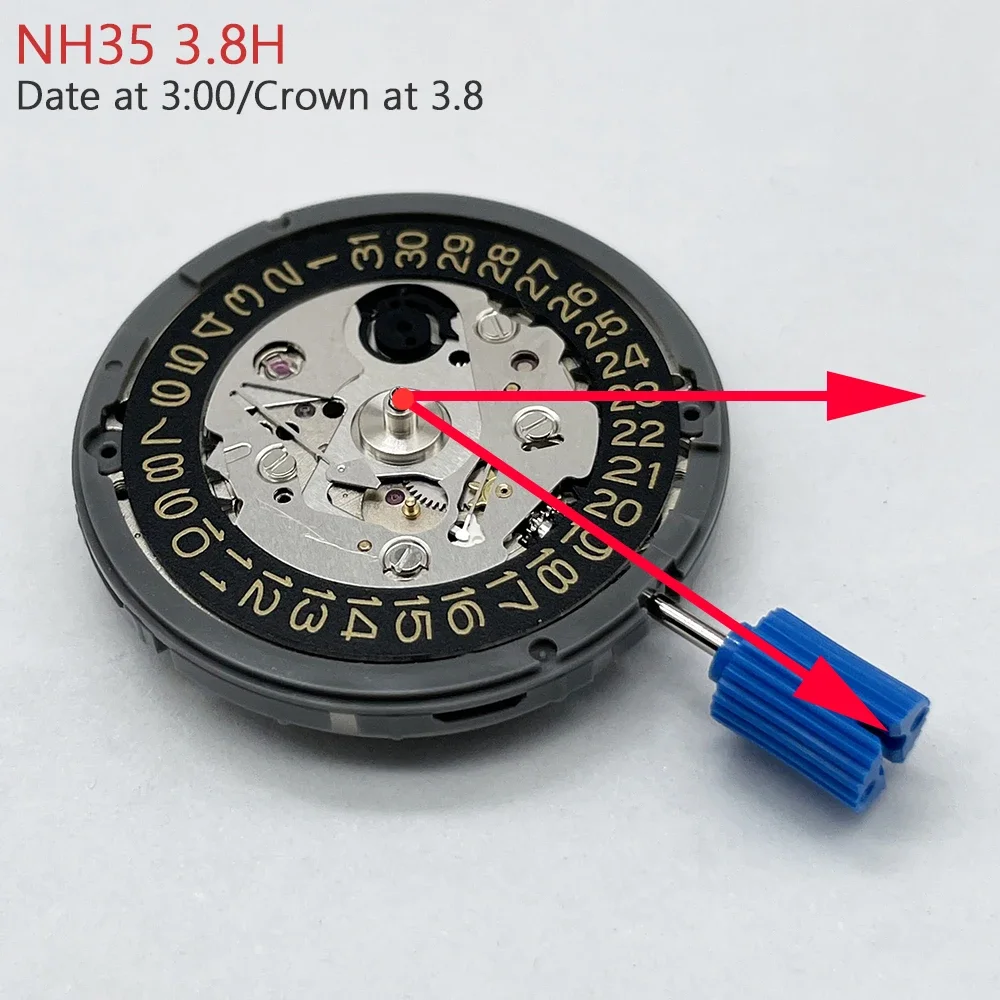
Record-Breaking Precision: The World’s Most Accurate Moonphase Watches
The pursuit of lunar accuracy has produced some truly extraordinary timepieces that demonstrate the outer limits of what mechanical watchmaking can achieve. These horological masterpieces represent not just functional timekeeping but the artistic and engineering pinnacle of astronomical complications.
Several manufacturers have created moonphase watches with astonishing levels of precision:
A. Lange & Söhne: Their advanced moonphase mechanisms achieve accuracy to within one day per 122.6 years, using precisely calculated gear ratios that closely approximate the true lunar cycle.
H. Moser & Cie. Endeavour Perpetual Moon: This remarkable timepiece maintains accuracy for an impressive 1,027 years before requiring a one-day correction—effectively making it accurate for multiple human lifetimes.
Patek Philippe Sky Moon Tourbillon: Beyond its astronomical price point, this watch offers moonphase precision requiring adjustment only once every 1,073 years through an exceptionally complex movement.
Andreas Strehler Sauterelle à Lune Perpétuelle: This independent watchmaker created what was once the world’s most accurate moonphase watch, with a deviation of just one day in 2.045 million years—an almost unimaginable level of precision.
IWC Portugieser Eternal Calendar: Possibly the ultimate achievement in mechanical lunar tracking, with a claimed accuracy of one day’s deviation every 45.36 million years. This essentially means it will never need adjustment during any practical timeframe.
These exceptional timepieces achieve their remarkable precision through several technical innovations:
- Ultra-precise gear ratios calculated to multiple decimal places
- Additional correction mechanisms that account for slight variations in the lunar cycle
- Integration with perpetual calendar functions that manage leap years
- Exceptional manufacturing tolerances measured in microns
For those seeking truly exceptional timepieces with extraordinary complications, these watches represent the absolute pinnacle of mechanical astronomy. Many elegant timepieces that often incorporate moonphase displays draw inspiration from these record-setting achievements while offering more accessible interpretations of lunar tracking.
Classic Automatic Dress Watches, Day Date Automatic Watches, Perpetual Calendar Automatic Watches
Price range: $540.60 through $574.60 Select options This product has multiple variants. The options may be chosen on the product pageAutomatic Chronograph Watches, Chronograph Pilot Watches
Price range: $233.36 through $237.58 Select options This product has multiple variants. The options may be chosen on the product pageClassic Automatic Dress Watches, GMT Automatic Watches, GMT Pilot Watches
Price range: $1,240.86 through $1,463.33 Select options This product has multiple variants. The options may be chosen on the product pageAutomatic Chronograph Watches, Classic Style Dive Watches
$3,053.06 Select options This product has multiple variants. The options may be chosen on the product pageAutomatic Skeleton Watches, Open Heart Automatic Watches
$98.36 Select options This product has multiple variants. The options may be chosen on the product pageBronze Automatic Watches, Military Inspired Automatic Watches, Professional Spec Dive Watches
Price range: $1,442.21 through $1,442.82 Select options This product has multiple variants. The options may be chosen on the product page
Setting Your Moonphase Watch: Practical Guide
Even the most accurate moonphase watch requires proper initial setting to maintain its celestial synchronization. The process requires attention to detail but is straightforward once you understand the fundamental approach.
Before Beginning: Determine the Current Moon Phase
1. Consult a reliable source such as an astronomical website, weather service, or dedicated moon phase app
2. Identify whether today is a full moon, new moon, first quarter, third quarter, or somewhere in between
3. Note the exact percentage of illumination if possible, as this helps with precise setting
General Setting Procedure:
1. Carefully pull the crown to the moonphase setting position (typically the first or second position, depending on the watch model)
2. Rotate the crown to advance the moonphase disc until it displays the current lunar phase
3. If setting from a known reference point (like full or new moon), count the days since that event and advance the disc accordingly
4. For watches with quick-set mechanisms, use the appropriate pusher or recessed button if available
5. Once set, gently push the crown back to its normal position
Important Precautions:
* Avoid setting the moonphase between approximately 8 PM and 3 AM when the date change mechanism may be engaged
* Move the hands forward rather than backward when possible to maintain proper gear alignment
* Consult your specific watch manual, as setting procedures vary between manufacturers and models
* For vintage watches, extra gentleness is advised as parts may be more fragile
For most standard moonphase watches, once properly set, you’ll need to make a one-day adjustment approximately every three years to maintain alignment with the actual lunar cycle. Watches with high-accuracy mechanisms may require adjustment at much longer intervals, depending on their specific design.
Proper setting and maintenance practices directly impact how well your watch keeps time and tracks celestial events, similar to how proper care affects how long automatic watches last overall.
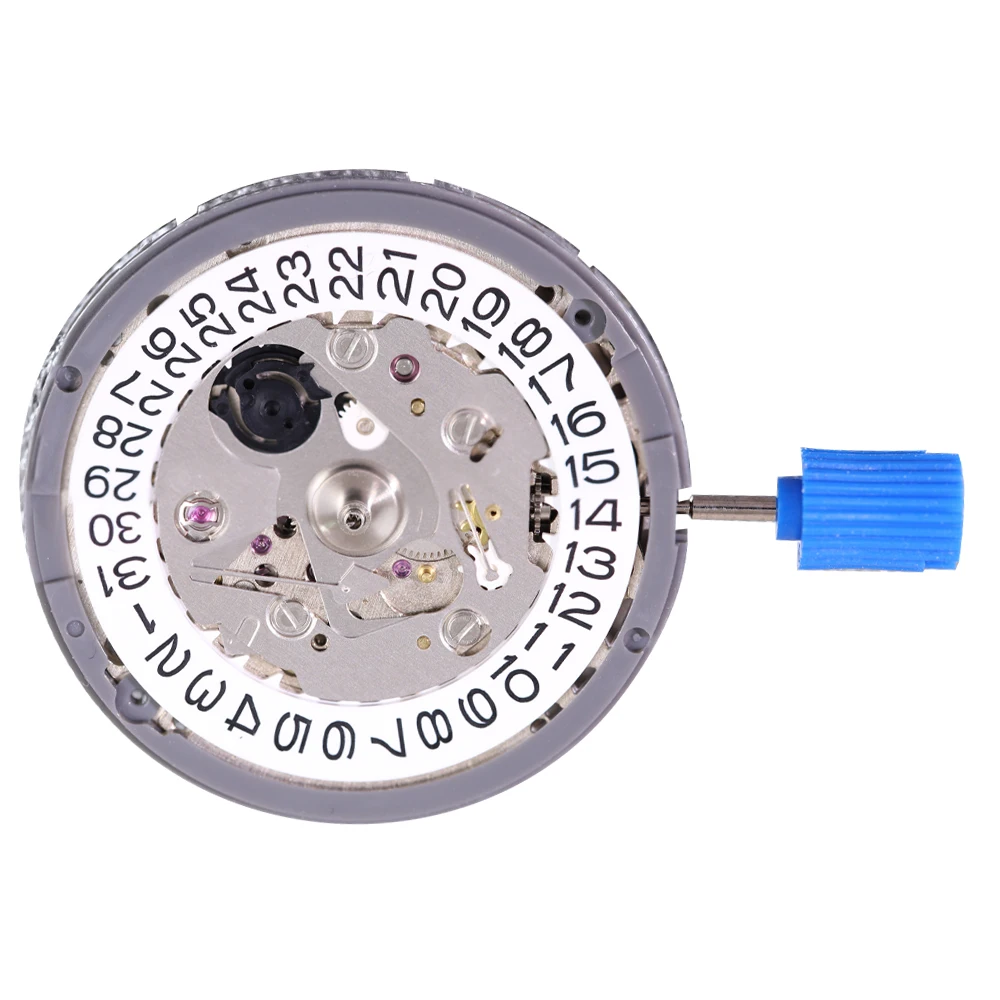
Maintenance for Longevity: Caring for Your Celestial Timepiece
A moonphase watch represents a significant investment in both craftsmanship and complexity. Proper care ensures this intricate mechanism continues functioning precisely for generations. Beyond standard watch maintenance, moonphase complications require specific considerations to preserve their astronomical accuracy.
Essential Maintenance Guidelines:
- Professional Servicing: Schedule comprehensive maintenance every 3-5 years with a qualified watchmaker familiar with astronomical complications
- Winding Practices: For automatic moonphase watches, maintain consistent power through regular wearing or a quality watch winder
- Manual Winding: If your watch requires hand-winding, do so at approximately the same time each day, preferably in the morning
- Setting Precautions: Avoid adjusting the moonphase or date during the 8 PM to 3 AM window when mechanisms are engaged
- Water Resistance: Even watches with good water resistance ratings should avoid unnecessary exposure to moisture
- Magnetic Field Protection: Keep your watch away from strong magnetic sources that can affect precision
Environmental Considerations:
* Temperature fluctuations can impact lubricants and movement accuracy
* Store the watch in a cool, dry place when not being worn
* Consider a quality watch box with UV protection if the watch will be displayed
* Avoid exposing the watch to strong shocks or vibrations that might disrupt the delicate moonphase gear alignment
Much like how environmental factors influence watch design and maintenance for specialized timepieces, astronomical watches require thoughtful protection from elements that could compromise their precision. With proper care, a quality moonphase watch can maintain both its functional accuracy and aesthetic beauty for many decades, becoming a treasured heirloom that continues tracking lunar cycles across generations.
The Collector’s Perspective: Moonphase Watches as Investments
Beyond their technical fascination and aesthetic appeal, moonphase watches often represent significant investment potential within the watch collecting community. Understanding what drives their value helps collectors make informed decisions when adding these celestial timepieces to their collections.
Several factors particularly influence the collectibility of moonphase watches:
- Technical Sophistication: Watches with higher accuracy moonphase mechanisms generally command premium prices and better value retention
- Complication Integration: Pieces that combine moonphase displays with other complications like perpetual calendars typically represent stronger investment potential
- Dial Execution: The artistic quality of the moonphase display itself—particularly hand-painted moons or guilloché sky backgrounds—significantly impacts collector appeal
- Limited Production: Small production runs or limited editions often appreciate more substantially over time
- Brand Heritage: Established manufacturers with historical expertise in astronomical complications tend to maintain stronger secondary market values
Certain brands have established particular reputations for exceptional moonphase watches, including Patek Philippe, A. Lange & Söhne, Jaeger-LeCoultre, Vacheron Constantin, and Audemars Piguet. However, interesting offerings exist across various price points from brands like Frederique Constant, Oris, and Christopher Ward.
For collectors with appreciation in mind, the intersection of rarity, technical excellence, and artistic merit creates the most promising investment profile. Many elegant timepieces that often incorporate moonphase complications serve as both daily wearable art and potential long-term assets. The visual approach to showcasing these complications varies significantly, much like the different approaches seen in open heart vs skeleton designs across the broader watch industry.

Beyond Mechanics: The Emotional Appeal of Lunar Timekeeping
Beyond their technical precision and investment potential, moonphase watches connect wearers to something profoundly human—our ancient relationship with the night sky and the cycles that have guided humanity since before recorded history.
This emotional resonance manifests in several meaningful ways:
The moonphase watch serves as a mechanical poem on the wrist—a constant reminder of our place within larger natural rhythms that transcend our hurried daily schedules. In a world increasingly dominated by digital interfaces and disconnection from natural cycles, these timepieces maintain a tangible link to celestial movements that have fascinated humanity for millennia.
There’s something undeniably romantic about carrying a miniature astronomical observatory on your wrist. The moon has inspired poets, lovers, explorers, and dreamers throughout history—its changing face symbolizing constancy within change, cycles of renewal, and the passage of time on a scale beyond human lifespans.
Each moonphase watch represents a remarkable convergence of science and art—mathematical precision expressed through mechanical poetry, often adorned with precious metals and meticulous hand-finishing. This blend of disciplines speaks to our desire for both understanding and beauty, for tools that are both functional and meaningful.
The cultural significance of specialized timepieces extends beyond their practical functions, creating emotional connections that transcend generations. Much like how the evolution of specialized watch complications tells a story of human ingenuity, moonphase watches narrate our ongoing relationship with the cosmos in miniature mechanical form.
Is a Moonphase Watch Worth the Investment?
For prospective buyers considering a moonphase watch, the question of value extends beyond mere price tags to encompass personal satisfaction, technical appreciation, and potential financial considerations. Understanding these factors helps make an informed decision aligned with your specific priorities.
Practical Considerations:
- Daily Functionality: While beautiful, moonphase complications serve more aesthetic than practical purposes for most modern wearers
- Complexity Trade-offs: The additional mechanics may require more maintenance and potential service compared to simpler timepieces
- Size Implications: Moonphase mechanisms often necessitate slightly thicker cases or larger dial dimensions
- Price Premium: Expect to pay approximately 15-30% more than comparable models without the moonphase complication
Investment Perspective:
* Entry-Level ($500-$2,000): Typically feature standard accuracy mechanisms requiring adjustment every 2-3 years. These watches often provide excellent value for moonphase aesthetics but may not appreciate significantly.
* Mid-Range ($2,000-$8,000): May include improved accuracy mechanisms and better finishing. These can maintain stable value with some appreciation potential, particularly from established Swiss and German manufacturers.
* High-End ($8,000+): Feature exceptional accuracy, additional complications, and finest craftsmanship. These pieces have stronger investment potential, especially from heritage brands with proven auction performance.
The most compelling reason to purchase a moonphase watch remains the daily enjoyment it provides—the pleasure of glancing at your wrist and seeing not just the time, but a mechanical representation of our nearest celestial neighbor. This connection to watchmaking tradition, astronomical function, and artistic expression creates a uniquely satisfying ownership experience.
The specialized complications that affect watch value extend beyond mere utility to create emotional connections with wearers. Like other horological achievements, moonphase watches remind us that the best timepieces are not merely tools but small mechanical wonders that celebrate human ingenuity and our enduring fascination with tracking time through the cosmos.

